Samsung Droid Charge Review - Droid Goes LTE
by Brian Klug on June 22, 2011 7:47 AM EST- Posted in
- Smartphones
- Samsung
- LTE
- 4G
- Droid Charge
- Mobile
Display
Of course one of the most compelling features of the Charge is the 4.3” Super AMOLED Plus display. We’ve talked about Super AMOLED before - for a quick refresher, SAMOLED is simply an AMOLED panel with the display, digitizer, and top glass bonded using optical adhesive. Every time light encounters an air-glass interface, a certain amount of light is reflected, usually around 4%. That adds up fast when you consider that each contributes to glare, less light making it out, and additional thickness, with each incurring a transmission loss and back reflection. Optically bond the entire thing together, and the stack behaves like one continual piece of glass instead of three separate pieces. That’s the “Super” in Super AMOLED.
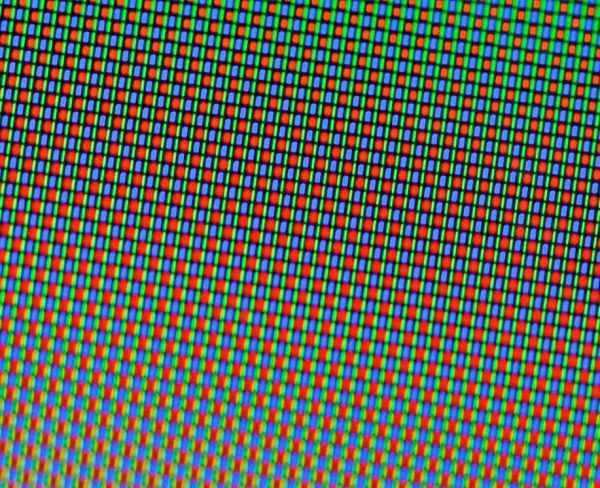

Left: Samsung Galaxy S with RG-BG PenTile subpixel layout (Super AMOLED), Right: Droid Charge with RGB stripe subpixel layout (Super AMOLED Plus)
The next part is Plus. Both Super AMOLED and the original AMOLED use a PenTile subpixel rendering layout. Instead of 3 subpixels per pixel (RGB), AMOLED uses sets of 2 subpixels per pixel (RG-BG) to create the perception of the same effective resolution of an RGB stripe. The result is better informational efficiency - fewer subpixels to convey the perception of the same image. RG-BG PenTile is great in practice for things with organic structure, and not good for one pixel thick graphics, lines, or UI elements. Unfortunately, that includes text. Note that RGBW PenTile for LCD displays actually renders text brilliantly, but that’s a discussion for the Droid X2 review.
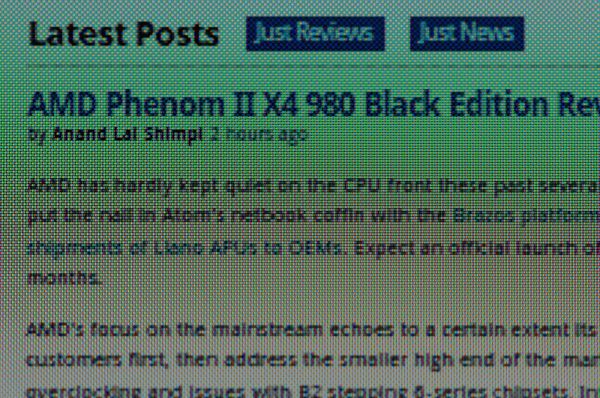
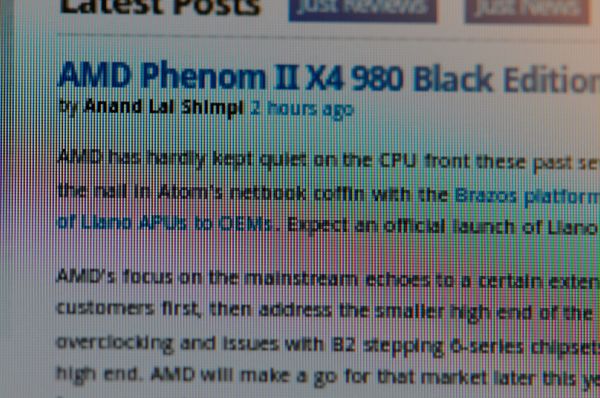
Left: 100% zoom of Super AMOLED, Right: 100% zoom of Super AMOLED Plus (note that the color banding is aliasing from the camera sensor sampling)
As a result, Samsung has moved on from PenTile and introduced Super AMOLED Plus which brings all the benefits of an AMOLED display (blacks that are completely off, power savings on black, effectively infinite contrast, e.t.c.) with a full 3 subpixel per pixel RGB stripe that renders text and one pixel thick UI elements without any loss of resolution.
Subpixel layouts aren’t of course all there are to talk about with Super AMOLED Plus. One of the things original AMOLED was often criticized for having was saturated colors, and rendering white with a definite blue cast. Moreover, one of my chief complaints has been that it used to seem like white point wasn’t stable across the brightness scale on older panels. We’re going to do display brightness reporting a bit differently from now on. Instead of just measuring at the maximum brightness, we will measure white point, white, and black at 100%, 75%, 50%, 25%, and 0% brightness on the device and report those, so we can track how linear the scale is, and white point. Inside the graph we will still report maximum brightness data.

The display brightness scale on the Charge is nice and linear, almost perfectly so. Unfortunately it appears that Super AMOLED Plus still retains a slightly blueish cast as evidenced by color temperature above and around 8500K. Contrast still is as impressive as we’re used to seeing for AMOLED though, with essentially no reading on blacks due to the pixels being essentially off.
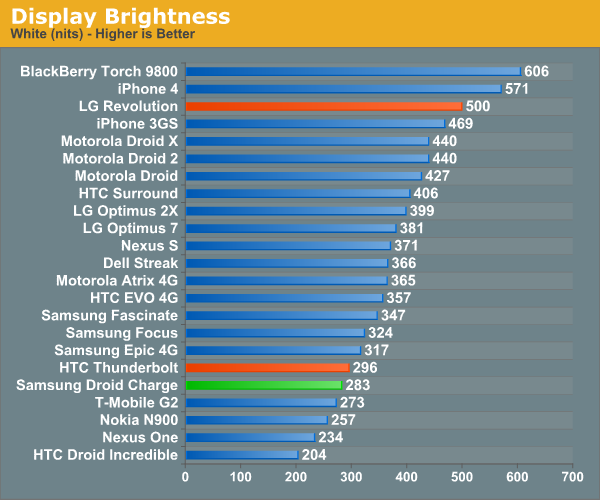
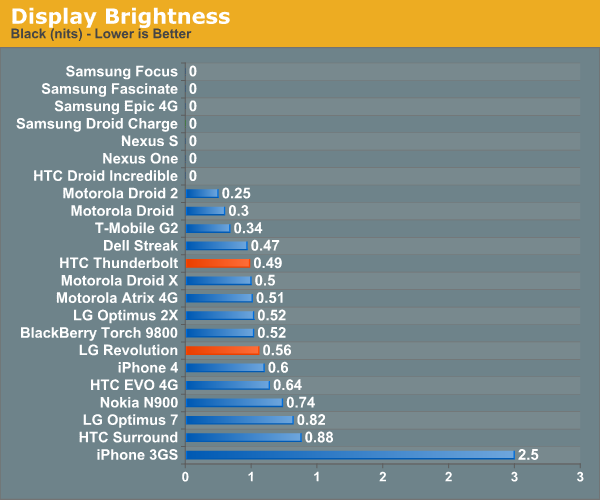
The Charge’s display is exactly the same as what’s being used in the Galaxy S 2 - both are 4.3” WVGA 800x480 SAMOLED+. I feel like 4.3” is as big as one really should go with WVGA, and having seen qHD screens that are the same size, I find myself wishing that Samsung somehow had been able to make a qHD SAMOLED+ display. Alas, one can’t have one’s cake and eat it too, at least not yet.
Viewing angles on the Charge’s SAMOLED+ display are also stellar, there’s virtually no color distortion as you move to extreme angles horizontally or vertically. It simply falls off to zero as you exceed some critical angle at the most extreme of angles, and that’s a good thing.
That said, I do have a problem with SAMOLED+ right now, one that I didn’t notice ever with any other SAMOLED or AMOLED display. The problem is especially severe in my climate, where at the time of this writing it’s literally 110 F (43 C) outside - overheating.
I’ve carried the Charge around for some time now, and noticed that when I spend lots of time outside using it in the sun, or leave it on my dashboard for navigation, the device will overheat and restrict maximum brightness to a little over half. As a result, display brightness is restricted right when you need it the most. If you let things get out of hand more, the Charge will disable battery charging to prevent the battery from exceeding safe operating temperatures in addition to keeping the display brightness low.
I’ve had phones on my dashboard, in my pocket, and outdoors in the 110+ F climate here all the time, and never have I experienced this much overheating. I stood outside with the Charge and an IR thermometer and saw this behavior take place when the front glass hit 105 F consistently, which seems a bit low for restricting things, although inside it’s probably substantially warmer. I suspect I’ll see the same SAMOLED+ overheat brightness restrictions kick in with the Galaxy S 2 as well. If you’re in a cool climate, you essentially can ignore this, or if you’re in a warm climate but not going to use the device for Google navigation on your dashboard, this isn’t a huge concern either. However, in climates like mine, it’s a day to day annoyance if you’re outside with the phone in hand for any amount of time. I’m not even an outdoors person (by any stretch of the imagination), and even then I’ve seen the Charge do this little overheat dance a few times already.

















61 Comments
View All Comments
whome.doyou - Thursday, September 29, 2011 - link
So can we now make calls and browse at the same time with this 4G phone on the Verizon network?